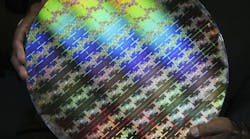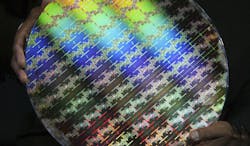Energy Efficiency Drops Off the Radar for Semiconductor Fabs
Back in 2012, the International Sematech Manufacturing Initiative (ISMI) conducted a Worldwide Fab Energy Study to help semiconductor manufacturers reduce their energy use and boost efficiency. But judging by the tone of the upcoming Semicon West show for semiconductor manufacturing, energy efficiency has lost its marquee billing when the topic turns to sustainability.
“Through the efforts of Sematech and SEMI (Semiconductor Equipment and Materials International), a lot of the low-hanging (energy efficiency) fruit has been grabbed,” says Sanjay Baliga, senior manager of SEMI’s Environment, Health and Safety (EHS) Div. “Now it is becoming more costly to get returns. There has also been a shift in society’s attitudes about energy efficiency because energy costs in the U. S. are low.”
Baliga thinks energy efficiency has become more of an issue in Asia than in the States. “Particularly in Japan, because of the Fukushima disaster, energy efficiency has become a societal imperative that has little to do with economics. And Taiwan focuses on it because it is more difficult to build a power plant there. But energy efficiency has become less relevant for larger manufacturers,” he says.
When it comes to sustainability in semiconductor manufacturing, the focus has shifted to issues surrounding the move to fabricating large 450-mm-diameter wafers. The problem is that transitions to the larger wafers will take place as semiconductor makers also change over to new manufacturing processes. It is not a simple change.
The combination of transitions looks problematic. Specifically, semiconductor makers are increasingly concerned about processes that require reactive chemistries, where some of the materials used are naturally unstable and may have energetic properties. Examples include diethyl zinc, tertiarybutyl phosphine, trimethyl aluminum, trimethyl gallium, and trimethyl indium.
By-products of some processes can be reactive as well under certain conditions that arise during the manufacturing process. “As the industry goes to smaller and smaller nodes, standard silicon is less useful. There is an increased use of compound semiconductor materials that are more energetic. LED and photovoltaic fabs have been using these substances extensively and the rest of the industry wants to learn from their experiences,” says Baliga.
The semiconductor industry has long been accustomed to working with materials that are highly flammable, such as phosphine and silane, and combustible plastics. But the increased use of energetic materials is a relatively new development that has accompanied the introduction of more novel semiconductor manufacturing chemistries. Their use ushers in the prospect of safety measures akin to those found in other industries such as munitions, where unstable compounds are a daily fact of life.
One indication of concern was the formation of an Energetics Working Group within Sematech. The effort got rolling after a presentation in 2011 by a semiconductor manufacturer at a safety and health conference that described a serious fire and explosion at a site using energetic materials. According to Sematech documents, ensuing discussions revealed that similar incidents were happening more frequently than what was generally perceived. It turned out that over 70 incidents had taken place in the past five years. About 40% of them were associated with unreacted materials or energetic by-products in postprocess systems such as vacuum pumps and vacuum lines, exhaust systems, and abatement units.
As a result, Sematech developed a list of root causes and best-known methods of dealing with them. Nevertheless, the topic of developing safe methods for handling energetic materials remains a high priority. That is one reason why, in conjunction with the upcoming Semicon West semiconductor manufacturing exposition, the SEMI Environmental Health and Safety Div. is organizing a four-day event to share information about sustainable manufacturing that includes a session devoted to energetic materials. The Sustainable Manufacturing Forum at Semicon West will host experts from a variety of semiconductor manufacturing industries and their supply chains who will address a wide variety of environment, health, safety (EHS), sustainability, and social responsibility topics affecting high-tech manufacturing.
On Tuesday, July 8, a session on advanced abatement systems will host speakers from DAS Environmental Expert GmbH and from 3SAS Trading who will discuss approaches to abate greenhouse gases, metal-organic chemicals, and compound semiconductors.
On Wednesday, July 9, representatives from Sematech, Applied Materials Inc., IBM, and the SUNY College of Nanoscale Science and Engineering will share information on EHS hazards and approaches to control these hazards in future high-tech manufacturing facilities in a discussion that is expected to cover 450-mm wafer manufacturing, metal-organic/compound semiconductor use, and extreme UV photolithography. Later that day, a roundtable discussion among speakers from Intel, Samsung, Air Products and Chemicals Inc., Applied Materials, and the M+W Group will cover impressions of EHS hazards and approaches to control these hazards in the next generation of fabs. n
Resources:
Semicon West Sustainable Manufacturing Forum, www.semiconwest.org/node/11631

